
January 25, 2021
Salient data points:§ 23: # of consecutive years of Pepsi Super Bowl advertising§ 7.3%: Pepsi’s volume decline in first nine months of 2009§ 2.3%: Soft-drink industry’s volume decline over same period§ 6.6%: Coke's volume decline over same period§ $74.6M: Pepsi brand ad investment in 2008§ 60%: year-over-year (YOY) increase in Pepsi’ online ads in 2010§ $3M: Cost of 30-second Super Bowl§ 98.7M: # of 2009 Super Bowl viewers Strategic Brilliance...
Read More →October 26, 2020
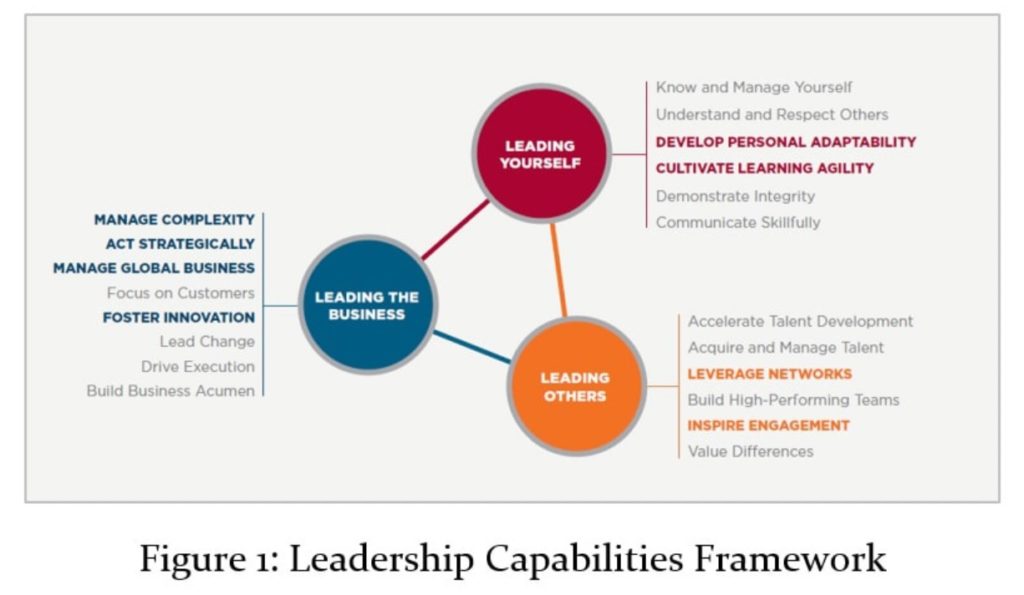
If you’re interested in exploring how to be a better business leader, I highly recommend an online course I recently completed, “Leadership in 21st Century Organizations.” The course, offered by the Copenhagen Business School via the Coursera platform, aims to address two key questions. The first is, what is 21st-century leadership?What is it?What's it composed of?What are the main ideas? And, the second question, how should it be different from...
Read More →August 18, 2020
Continuously assessing & evolving an executive leadership team is vital yet difficult. First, people aren’t necessarily perfect packages of capabilities that meet every specific need. Often, people, even top managers, excel at some things but are not as competent in other matters. Second, leaders may also be seemingly difficult to replace. Just because you are not satisfied with a current member of your team doesn't mean it will be easy to...
Read More →August 17, 2020
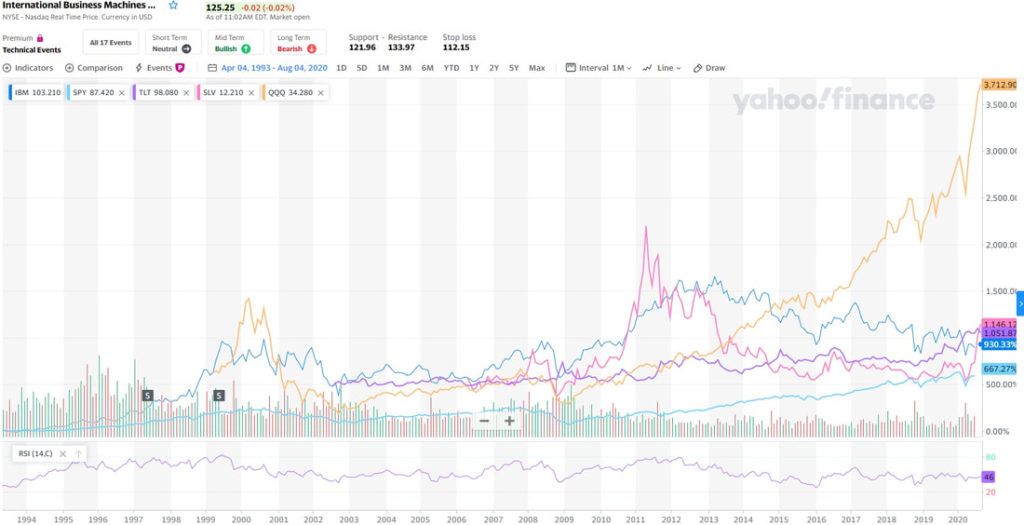
In April 1993, Newsweek wrote about IBM's decision to hire an outsider as its next CEO. The new CEO had neither IBMspecific nor industry expertise. The article indicates that other "successful" CEOs weren't interested in the position and hence the IBM board was forced into hiring a sub-optimal candidate. Now, some two-and-half decades later, it's interesting to look back at the situation, strategic decisions and results. The Situation in 1993For...
Read More →August 7, 2020
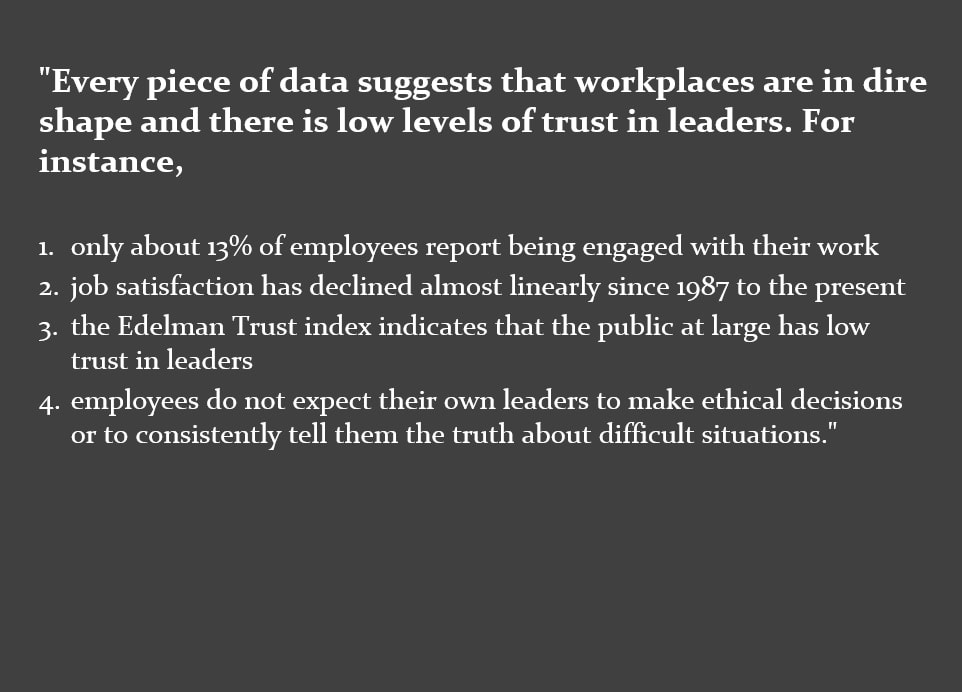
In a September 2015 Forbes article, a Stanford University professor of management cites survey data indicating challenges with employee engagement: The professor suggests that one potential factor for this lack of engagement is "almost inevitable outgrowth of the increasingly “transactional” nature of work...as there are an ever-higher proportion of contractors and part-timers doing organizational work." And, even "full-time employees face increasingly levels of economic insecurity including layoffs and, in the...
Read More →June 29, 2020
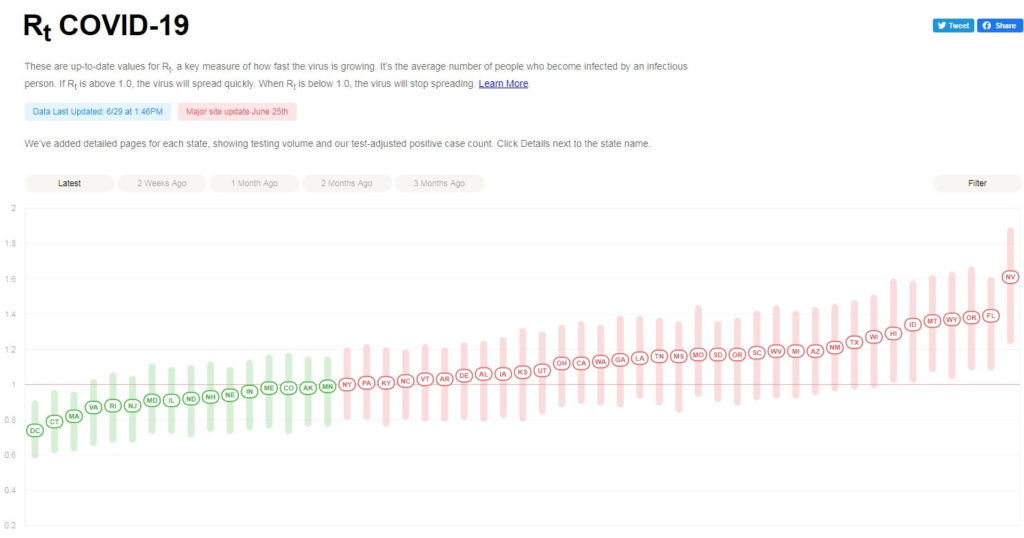
For those strategists interested in state-by-state COVID-19 data, this particular site provides visualizations of Rt data.https://rt.live/ "Rt represents the effective reproduction rate of the virus calculated for each locale. It lets us estimate how many secondary infections are likely to occur from a single infection in a specific area. Values over 1.0 mean we shouldexpect more cases in that area, values under 1.0 mean we should expect fewer."
Read More →April 29, 2020
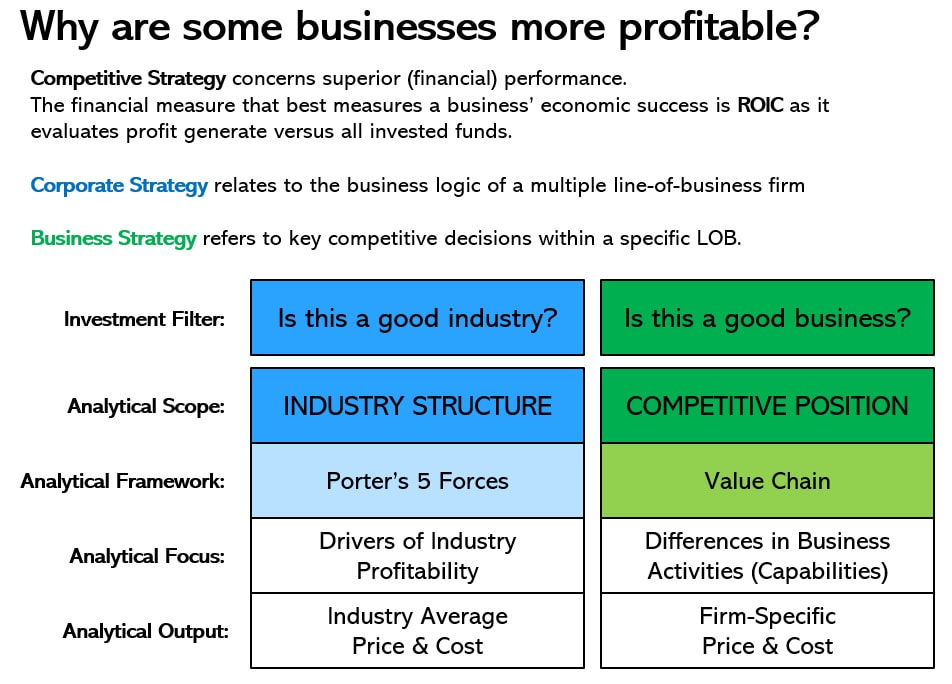
Two useful set of frameworks help an investor analyze a business' expected level of performance: Porter's 5 Forces & Value Chain tools. Used in combination, these frameworks help an equity analyst with framing a firm's ability to generate superior profits.
Read More →May 24, 2019
NOTE: this blog post is related to a Coursera #MOOC assignment and should be considered to a part of that particular program's requirements and context.The End of the Cord for Comcast?While cord-cutting has gotten a lot of media attention, it actually hasn't hurt the bottom line of traditional cable providers such as Comcast. And, it probably won’t for the foreseeable future. What is Cord Cutting?According to Technopedia, cord cutting “refers to...
Read More →March 16, 2019
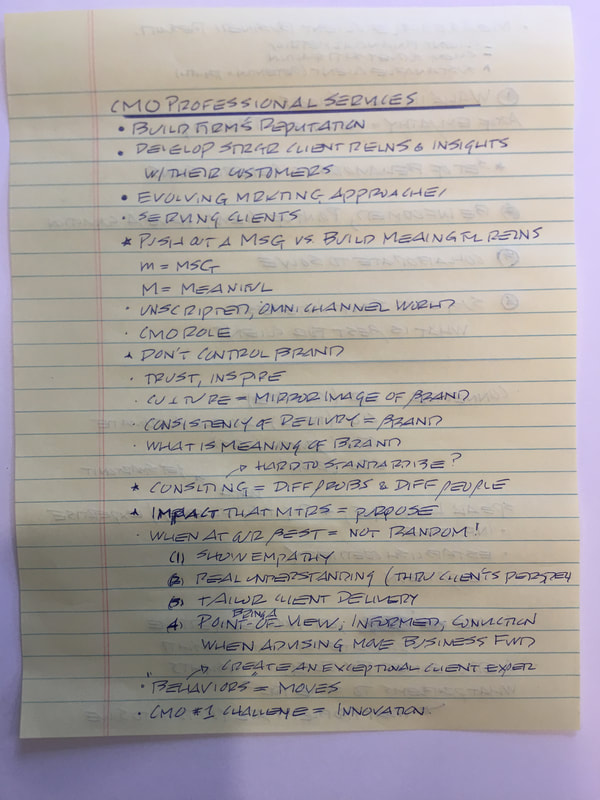
Below are my raw show notes from a recent "Measured Thoughts" audio cast featuring the Chief Marketing Officer (CMO) of Deloitte. I highly recommend this particular episode for those interested in the changing nature of marketing activities as well as how a professional services leader views marketing consulting services. And, recordings of many of the shows are listed here: https://www.measuredthoughts.com/radio-shows
Read More →November 25, 2018
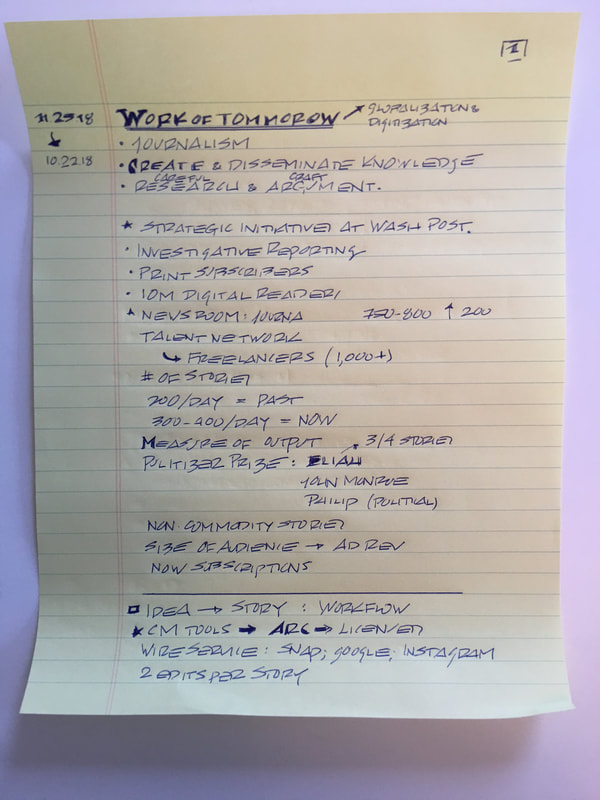
My raw show notes from the "Work of Tomorrow" audio cast focused on Journalism in the age of digital. Full show available via iTunes:https://itunes.apple.com/us/podcast/work-of-tomorrow/id1384784107?mt=2 Highly recommend it for those interested in the changing nature of work due to globalization & digitization.
Read More →June 3, 2018
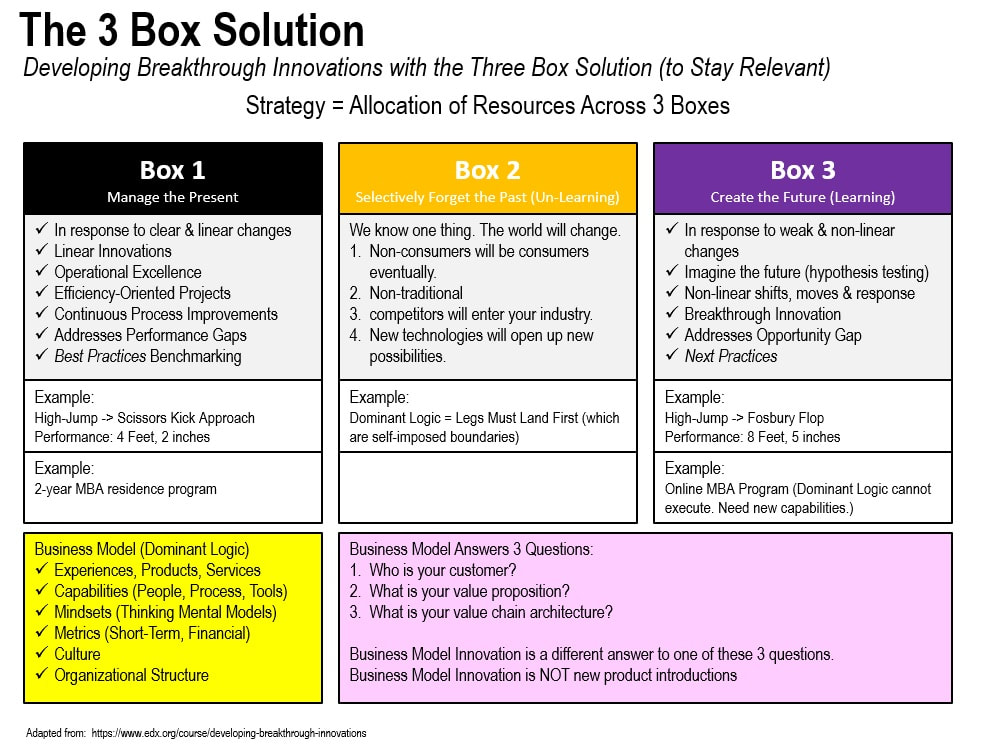
What is it that is preventing you from spending more time in Box 2 and Box 3? What are the barriers that prevent you from spending more time on the future? There are four challenges or barriers which when coupled together make is nearly impossible for a traditional financial services firm to spend more of its collective time, investment and resources in Box 2 and Box 3. The first challenge...
Read More →May 20, 2018
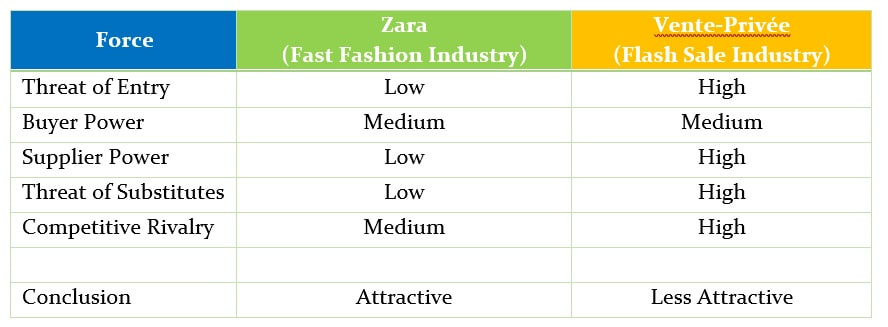
Interested in learning more about scarcity & flash (event) sales business models? If so, then the following #MOOC includes timely & relevant information:https://www.coursera.org/learn/startup-financing-without-vc/home/welcome Problem StatementUsing the market and industry portions of the seven domains framework to structure a response as to whether a scarcity apparel retailer like Zara or a flash sales apparel retailer like Vente Privée is or is not an attractive opportunity to start in India today. TerminologyZara is considered...
Read More →May 20, 2018
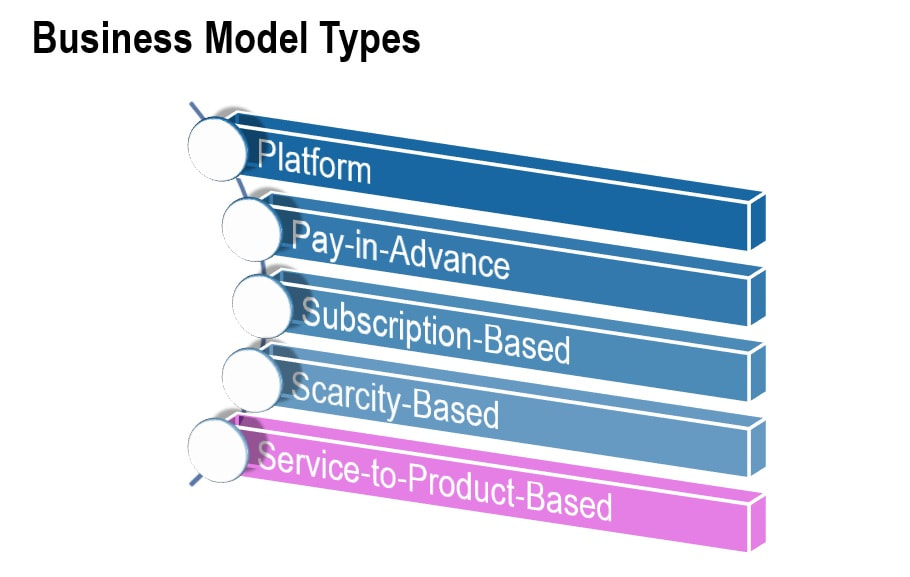
Interested in learning more about the Service-to-Product-Based Business Model? If so, then the following #MOOC includes timely & relevant information:https://www.coursera.org/learn/startup-financing-without-vc/home/welcome Problem StatementInvestigate determining a possible standalone product that might transform a service business into a service-to-product business using the following method: Find a service business in your community in which individuals deliver the service (or an idea for one), but not a retail business.Make a short list of the main services...
Read More →May 19, 2018
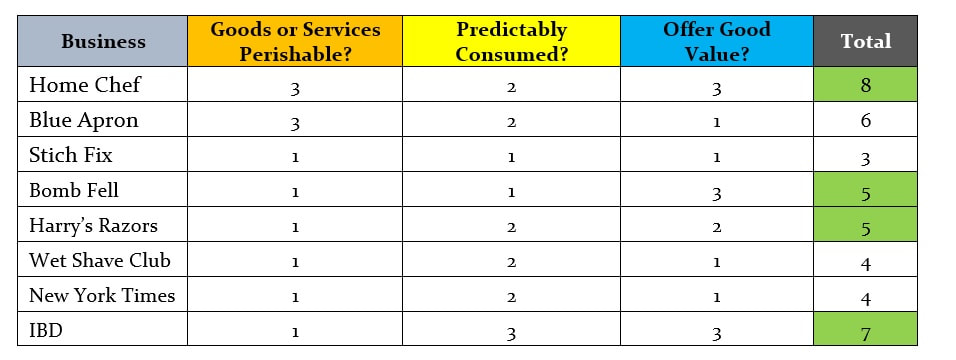
Interested in learning more about subscription-based business models? If so, then the following #MOOC includes timely & relevant information:: https://www.coursera.org/learn/startup-financing-without-vc/home/welcome Below is the module assignment as well as a sample of my investigation of current subscription-based businesses.If nothing else, the analytical framework provides a useful mechanism to structure the problem and formulate a viewpoint.Assignment Create a list of subscription businesses by typing 'subscription businesses' into a search enginePick at least two...
Read More →April 14, 2018
The Open Governance Index describes the control points used in an open source project across 4 dimensions: access, development, derivatives and community. The success of Google’s relatively closed Android mobile platform aside, research suggests that platforms that are the most open will be most successful in the long term. Using the Open Governance Index (OGI) to measure the openness of The MySpace platform is revealing. The first dimension of the...
Read More →February 26, 2018
In edX's MOOC, Platform Strategy for Business, the following question prompted a heated debate:Does Netflix have Economies of Scale? Virality? In short, my analysis reveals the following: Supply Economies of Scale? Yes.Demand Economies of Scale? No.Virality Effects? Yes.Implicit Network Effect? Yes. With regards to Netflix, I would argue that it has supply economies of scale with regards to its original content capability. With regards to its distribution of non-original content, it...
Read More →August 29, 2017

As a CMO, you are probably wondering if you are taking full advantage of new marketing technologies and contemporary ways of working that would modernize your organization’s marketing function. As the Chief Strategy Officer of LiquidHub, I’m interested in helping marketing executives transform the marketing function to win in the digital age. Recently, I found two articles highlighting the importance of architecting the future of a marketing organization with strategic...
Read More →March 22, 2013
In the Spring 2013 Issue of “strategy + business,” the article labeled, “The Thought Leader Interview: Cynthia Montgomery” is a lively complement to her book titled, “The Strategist: Be the Leader Your Business Needs.” I’ve included some thought-provoking snippets from the piece below along with my own commentary.“What will this firm be, and why will it matter?”This is the key, two-part question that Montgomery uses to help an executive focus...
Read More →March 10, 2013
http://hbr.org/1989/11/the-origin-of-strategy/ar/1 A classic article on the origins of business strategy, Henderson compares competition in the ecosphere (i.e., “natural competition”) with that in the trade and commerce (i.e., “strategic competition”). Some interesting observations: The Nature of Competition in Ecology:Gause’s Principle of Competitive Exclusion in Biology: “no two species can coexist that make their living in the identical way.” The Nature of Competition in Business:Gause’s Principle applied in the business environment: each...
Read More →May 10, 2012
To help my clients understand the different “levels” or “perspectives” of strategy, I created the “strategy cascade." It consists of 5 levels. From “top” to “bottom," the levels are: Level 1: Being “Strategic”Being strategic means "consistently making those core directional choices that will best move you toward your desired future. This implies you know where you’re starting from, you’re clear on where you want to go (i.e. the Vision) and...
Read More →